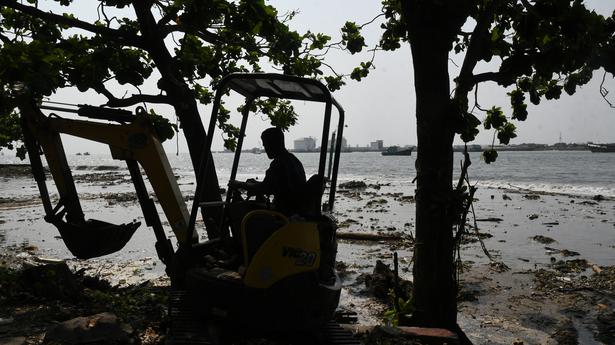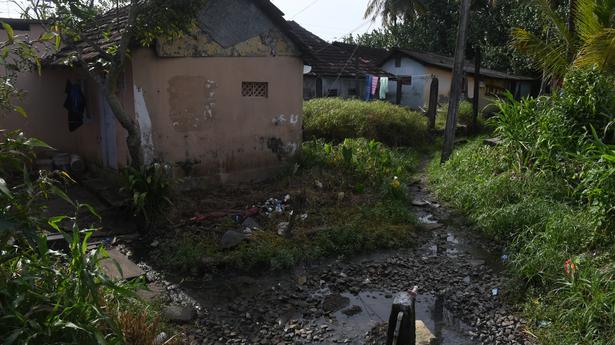A combination of sea wall and groynes is expected to offer solution to large-scale sea erosion
A combination of sea wall and groynes is expected to offer solution to large-scale sea erosion
A ₹40-crore project of the Irrigation department to ready a sea wall and a pair of concrete tetrapod groynes along the Fort Kochi beach has been sent to the Kerala Infrastructure Investment Fund Board (KIIFB) for its sanction.
“The proposed sea wall will cover the 700-metre stretch from the compound wall of INS Dronacharya to the area where the beach that borders the Chinese fishing nets begins. This will help regenerate vast tracts of the beach that were lost during the past decade and a half,” said a senior official of the Irrigation department.
A combination of the sea wall that is meant to arrest sea erosion and groynes to reclaim the beach is expected to provide a lasting solution to the large-scale sea erosion along the famed beach which saw footprints of colonial powers and traders from far off lands. The extent of sea erosion increased after dredging of the adjacent shipping channel intensified, following the commissioning of the Vallarpadam International Container Transshipment Terminal.
The decision to construct a sea wall and tetrapod groynes is being seen as a relatively more durable option, although it is estimated to cost four times than an approximately ₹10-crore project that had been submitted to the Kerala Tourism over a year ago by experts from the Department of Ocean Engineering, IIT-Madras, to arrest sea erosion on the beach front. The IIT team had suggested rebuilding of the existing seawall in an innovative, curvy pattern to lessen the intensity of waves that lashed the shore. They had further suggested laying of geotextile tubes well into the sea to aid beach formation and laying them on the beach to arrest sea erosion.
This was seen as an economical, eco-friendly, low-carbon footprint and aesthetic method to restore the beach to its old charm. However, sources in the Irrigation department said the sea wall and tetrapod groynes that had been envisaged would not be at the cost of the aesthetics of the beach.
A senior Kerala Tourism official said that restoring the beach was a pre-requisite to rebuilding the walkway along its periphery which had suffered extensive damage during the past couple of years due to extensive sea erosion. “Efforts are under way to kick-start work before the onset of the tourist season in September-October. It will all depend on KIIFB sanctioning the project,” he added.




